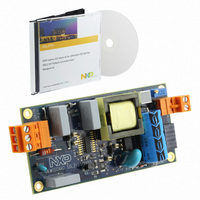SSL2101T/DB/FBCB120V,598 NXP Semiconductors, SSL2101T/DB/FBCB120V,598 Datasheet - Page 12

SSL2101T/DB/FBCB120V,598
Manufacturer Part Number
SSL2101T/DB/FBCB120V,598
Description
BOARD EVAL LED DRIVER SS2101
Manufacturer
NXP Semiconductors
Type
DC/DC Switching Converters, Regulators & Controllersr
Specifications of SSL2101T/DB/FBCB120V,598
Current - Output / Channel
400 mA ~ 800 mA
Outputs And Type
1, Isolated
Voltage - Output
9 ~ 23 V
Features
Dimmable, TRIAC Dimmable
Voltage - Input
120VAC
Utilized Ic / Part
SSL2101
Input Voltage
120 V
Board Size
103 mm x 50 mm x 20 mm
Maximum Operating Temperature
+ 100 C
Minimum Operating Temperature
- 40 C
Operating Supply Voltage
8.5 V to 40 V
Product
Power Management Modules
Dimensions
103 mm x 50 mm x 20 mm
For Use With/related Products
SSL2101T
Lead Free Status / RoHS Status
Lead free / RoHS Compliant
Lead Free Status / RoHS Status
Lead free / RoHS Compliant, Lead free / RoHS Compliant
Other names
568-4812
NXP Semiconductors
UM10341
User manual
8.4 Changing the load curve
8.5 Multiple driver support
The value of the demo board weak bleeder (R6 and R7) is chosen to minimize losses
(approximately 2 W to 3 W). The weak bleeder normally only switches on during dimmed
operation. The voltage drop with some transistor dimmers is, however, not sufficient to
cause full dimming range control (minimum 10 % instead of <1 %), because the average
rectified voltage is used to determine the dimming position. To compensate for the
reduced voltage difference, voltage detection can be made more sensitive by replacing
R4 with a zener diode, such as the BZV85-C200 for 230 V (AC), or the BZV85-C68 for
120 V (AC) applications. Because of increased sensitivity, the dimming curve will also be
steeper when using triac dimmers.
The load curve can be divided into two regions: one where the control loop limits the duty
cycle of the converter, and where the output current is regulated, and another where the
duty factor feedback is no longer dominant. This last part occurs at output voltages below
13 V. In this area, constant output power becomes the dominant control mechanism.
Changing the turns ratio of the transformer to match the output load will also change the
load curve.
It is possible to attach multiple converters to a single dimmer. When using triac dimmers
the inrush current will rise, although not in proportion to the number of converters used.
Transistor dimmers are more suitable for use with multiple converters because the
dimming range will increase due to the added bleeder action, and there is no inrush
current.
Transistor dimmers contain active circuitry that require a load charge during the time
that the dimmer is open. The dimensioning of the circuit generating the internal supply
voltage inside the dimmer is made critical in order to avoid excessive internal dimmer
losses. This means that the remaining voltage drop over the lamp must be low
enough to reach this charge. For dimmers such as the Busch-Jaeger 6519U, the
minimum lamp load is specified at 40 W which is equivalent to a 1.3 kΩ resistor load
at 230 V(AC). Such a load would result in highly inefficient operation at low output
power levels, since most energy is wasted in order to drive the dimmer, and not to
produce light.
All information provided in this document is subject to legal disclaimers.
Rev. 2 — 3 February 2011
SSL2101 12 W mains dimmable LED driver
UM10341
© NXP B.V. 2011. All rights reserved.
12 of 24















